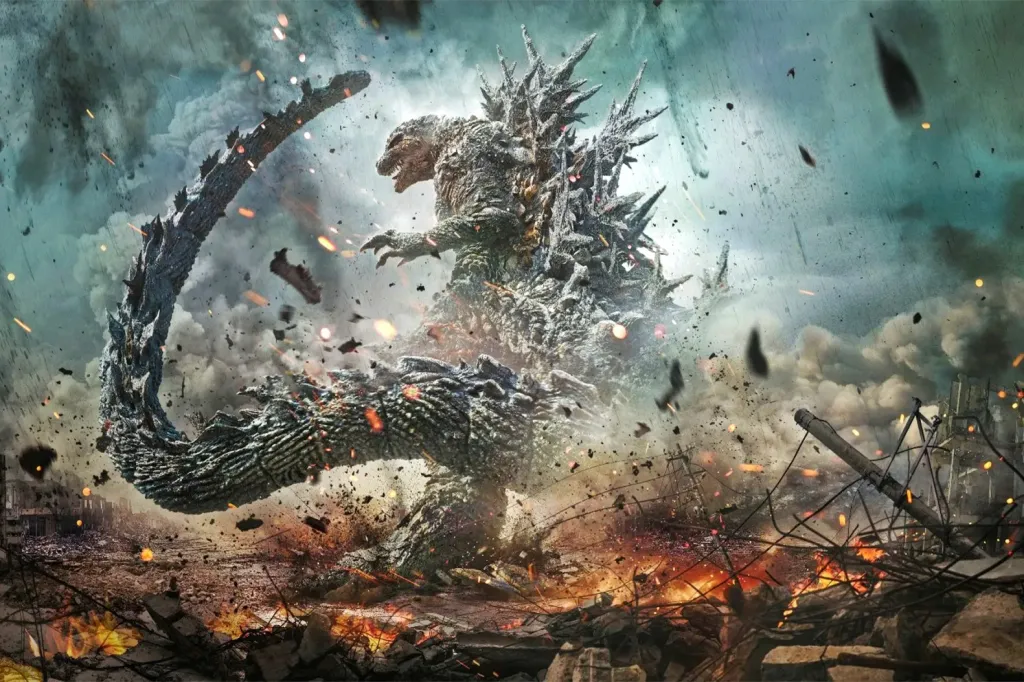The wait for Toho Godzilla movies is relatively slow. In the last decade, the Western variant of the giant radioactive lizard has appeared in three films and a TV show with another movie on the near horizon. In that time, we’ll have had two Japanese offerings.
But that wait is clearly worth it because, well, look at Godzilla: Minus One.
The 70th anniversary of Godzilla wades into view in 2024 and Takashi Yamazaki’s movie encapsulates everything that made Godzilla such a long-lasting icon of monster movies. Godzilla is symbolic in nature, and sure, sometimes the symbol is ”this big lizard smacking about a big monkey could earn us a few bucks,” but at its best, it’s used as a weapon to self-flagellate and repent. An unstoppable monster.
Godzilla: Minus One is about the destructive nature of a mutant force, but its strength comes from the delicate position of a nation that played for the wrong side in a global war and had its civilian population suffer horrifically in the process. The message early on in the film is shame, anger, bitterness, and disillusion among those left behind. Who is to blame for what has happened? What should life be going forward?

A rebuilding of Japan of course, does occur, but the scars of war still burn in much of its population, and while still at its lowest ebb, along comes the physical manifestation consequence of atomic warfare. A giant lizard of legend made colossal by mankind’s meddling that sees Japan as a part of its stomping ground.
The build to Godzilla eventually making landfall in Minus One puts a dreadful urgency into the air. There’s a very insistent message that the monster will obliterate a fragile country if left unchecked and so some poor schlubs get the unenviable task of destroying the beast with tools barely fit for vanquishing a shark. Those scenes carry the kind of terror reminiscent of Jaws’ shark hunting scenes quite fittingly, but here we already know a bigger boat stands about as much chance as the small wooden one the ragtag group of haunted military survivors and wannabes have.

When Godzilla does reach land, the impact is chaotic and devastating. So far, so Godzilla, right? But putting us back at the human level of the creature’s destruction shows the weight of every step and swipe of the tail on the cityscape. There’s no malice or meaning behind Godzilla’s actions, it’s simply defending its territory.
But it’s when Godzilla responds to being attacked that the real horror sets in. The charging sequence brings a tingling sense of dreadful anticipation that delivers in a jaw-dropping moment of disaster and Godzilla’s thermonuclear breath effectively vaporizes a massive chunk of the city, and we get the full effect of it from the ground.
The aftermath sees our somewhat fortunate protagonist Koichi surviving the blast, but faced with fresh devastation and frustration about his own defincies. His hopelessness is defined by a futile guttural scream at Godzilla across a landscape of rubble, corpses, and thick black rain.










